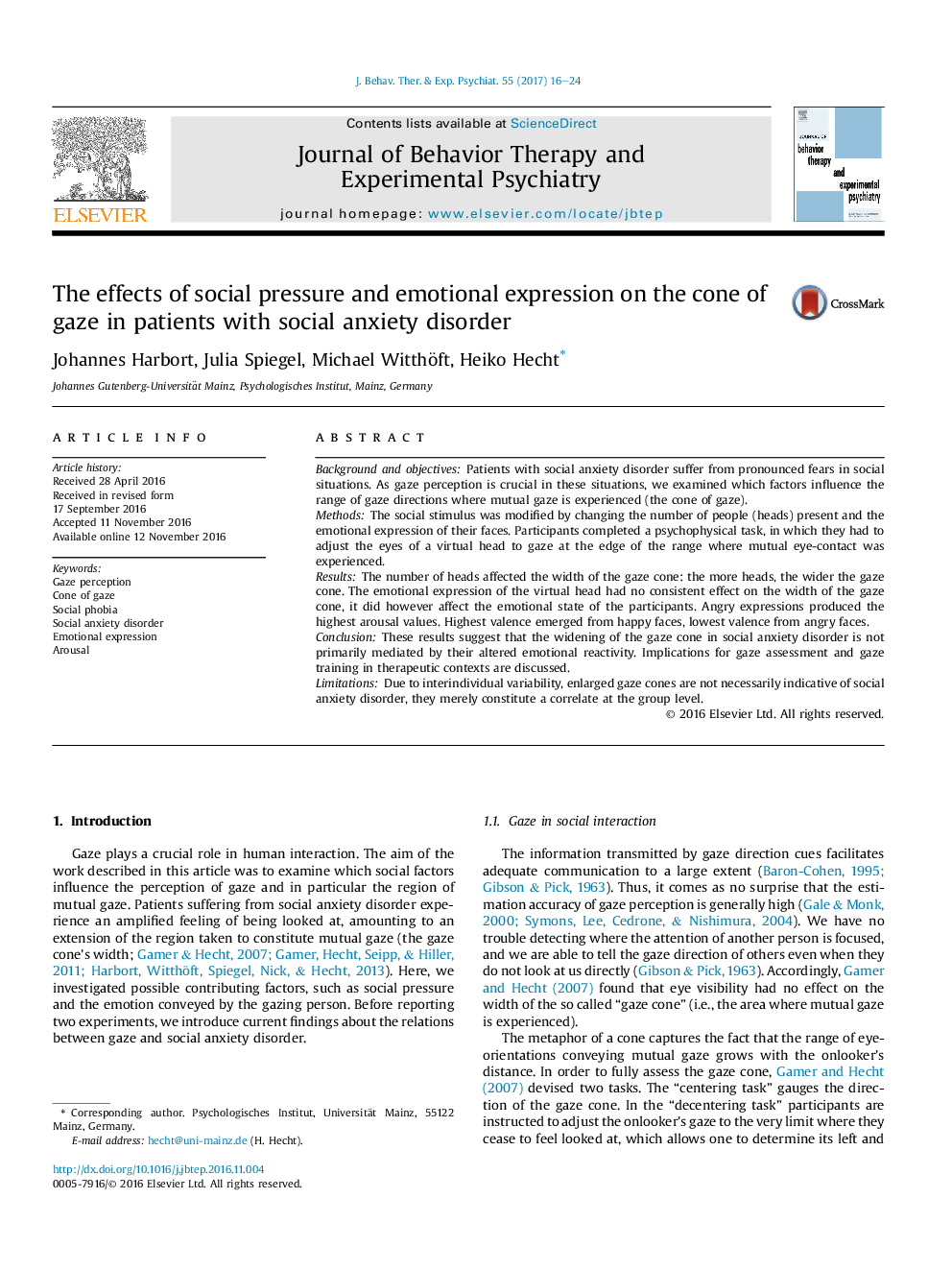| Article ID | Journal | Published Year | Pages | File Type |
|---|---|---|---|---|
| 5039048 | Journal of Behavior Therapy and Experimental Psychiatry | 2017 | 9 Pages |
â¢The effect of social anxiety disorder on the area of mutual gaze was investigated in two experiments.â¢The more virtual heads were present, the wider the gaze cone became.â¢No effect of the emotional expression on the width of the gaze cone was observed.â¢The widening of the gaze cone in social anxiety is not mediated by their altered emotional reactivity.
Background and objectivesPatients with social anxiety disorder suffer from pronounced fears in social situations. As gaze perception is crucial in these situations, we examined which factors influence the range of gaze directions where mutual gaze is experienced (the cone of gaze).MethodsThe social stimulus was modified by changing the number of people (heads) present and the emotional expression of their faces. Participants completed a psychophysical task, in which they had to adjust the eyes of a virtual head to gaze at the edge of the range where mutual eye-contact was experienced.ResultsThe number of heads affected the width of the gaze cone: the more heads, the wider the gaze cone. The emotional expression of the virtual head had no consistent effect on the width of the gaze cone, it did however affect the emotional state of the participants. Angry expressions produced the highest arousal values. Highest valence emerged from happy faces, lowest valence from angry faces.ConclusionThese results suggest that the widening of the gaze cone in social anxiety disorder is not primarily mediated by their altered emotional reactivity. Implications for gaze assessment and gaze training in therapeutic contexts are discussed.LimitationsDue to interindividual variability, enlarged gaze cones are not necessarily indicative of social anxiety disorder, they merely constitute a correlate at the group level.
